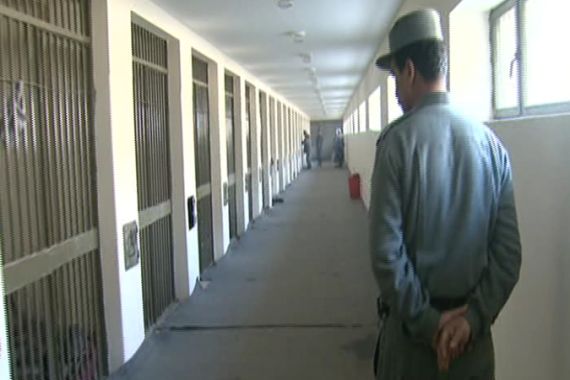UN finds ‘systematic’ torture in Afghanistan
Afghan interior ministry denies report’s findings, saying “no torture such as electric shock…takes place”.

A United Nations report has found “compelling evidence” that Afghan intelligence officials at five detention centres “systematically tortured detainees for the purpose of obtaining confessions and information”.
In the report published on Monday, the UN Assistance Mission in Afghanistan (UNAMA) said torture was practised systematically in some Afghan intelligence detention centres and children were among those who had suffered.
The report singled out National Directorate Security (NDS) facilities in the provinces of Herat, Kandahar, Khost and Laghman, as well as the national headquarters of the NDS counter-terrorism department in Kabul, the Afghan capital.
“Nearly all detainees tortured by the National Directorate Security reported the abuse took place during interrogations and was aimed at obtaining a confession or information,” the report said.
The findings were based on interviews, conducted from October 2010 to August 2011, with 379 pre-trial detainees and convicted prisoners at 47 detention centres across the country, the UNAMA said.
General Carsten Jacobson, a spokesman for the International Security Assistance Force in Afghanstan, told Al Jazeera: “We knew that there were certain installations in which mistreatment was happening….which is why we stopped the transfer of detainees to certain facilities in the south.”
When asked why ISAF continued to transfer detainees while knowing that torture was taking place in some of the facilities, he answered that “not the entire prison system of Afghanistan is under suspicion, and it is very clear it is in individual facilities in which this mistreatment happened there systemically.”
Torture methods
Gareth Porter, an American investigative journalist who writes on US foreign and military policy, told Al Jazeera that, for years, international troops routinely handed detainees over to Afghan intelligence and security forces specifically to be interrogated harshly.
Pointing to a report he had published earlier this year, Porter said this practice went back to 2005 and 2006 when US and Canadian forces were conducting large-scale sweeps.
“They were picking up hundreds of young Afghans without really knowing who they were and trying to interrogate them to get information from them, but not very successfully,” he said.
“What they did was to turn to the Afghan intelligence service and have them interrogated by the Afghans.”
|
General Carsten Jacobson, ISAF spokesman, talks to Al Jazeera about the torture report
|
The report said ill-treatment and lack of respect for due process had helped foster mistrust in the government and fueled the 10-year Taliban rebellion. Torture is a crime under Afghan and international law.
Although the report said there were credible allegations of torture at NDS centres, it noted that the use of torture was not NDS or government policy. The UN said it welcomed being given full access to detainees.
In response to the report, Afghanistan’s interior ministry issued a statement that said: “No torture such as electric shock, sexual harassment, or removing of (toe and finger) nails takes place in Afghan police detention centres.”
The ministry said it would investigate claims of mistreatment and would introduce “serious reform” if necessary.
The NDS issued a similar rebuttal, but stressed that its detention centres were open and free for lawyers, the Red Cross and lawmakers to visit.
“The NDS, while welcoming such reports and observations, dismisses torture methods by electric shock, removing nails and sexual harassment mentioned in this report. These claims are not true at all,” it said.
Some detainees interviewed for the report described being hung by the wrists from the wall or ceiling. Others gave accounts of being beaten, especially with rubber hoses, electric cables or wires or wooden sticks, on the soles of the feet, the report said.
Electric shock, stress positions including forced standing, removal of toenails and threats of sexual abuse were among other forms of torture that detainees reported, it added.
Routine blindfolding and hooding, and denial of access to medical care in some facilities were also reported. The UN documented one death in Afghan custody from torture in Kandahar in April 2011.